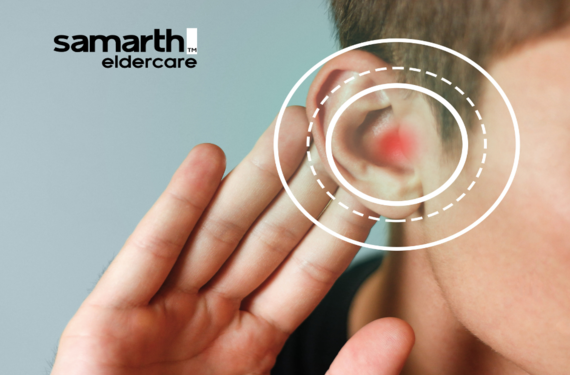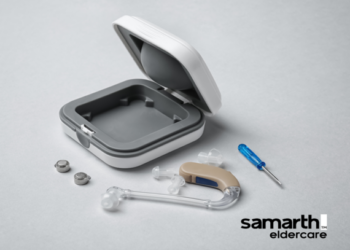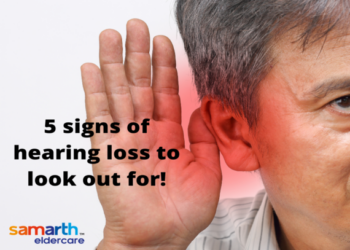Hearing issues can occur at any age. If left untreated, it can lead to hearing loss. People often associate hearing loss with ear issues only. However, even nose or throat infections too can impact your hearing. The three organs, the ear, nose, and throat, are closely connected, which is why we have ENT specialists.
Allergies occurring due to the rise of histamines in the body or sinus infections can cause hearing issues. Throat congestion can also lead to a blockage in the inner or middle ear, causing hearing issues. Swollen sinuses can cause more mucus generation, leading to inflammation in the Eustachian tube (a drainage passage for the middle ear) and pressure on the ear drum. Pain, dizziness, muffled hearing, or even partial or permanent hearing loss can occur due to such issues. The other common causes of hearing loss are an accumulation of ear wax, exposure to loud noises, ear infections, and aging.
Only a qualified ENT specialist can determine the exact cause of your hearing issues after due examination to rule out causes other than those related to the ear. Do not attempt self-treatment, as it can complicate matters. The best approach is to visit a doctor and get a diagnosis of what caused the hearing loss and follow the prescribed treatment. Sometimes, treating the underlying infection can cure hearing issues. If the doctor prescribes hearing aids, here are a few inputs to help you choose the right one.

Join Now >
Understanding a Hearing Aid
It is a small electronic device placed behind or in your ear to help you hear better. The hearing aids usually have four parts, namely, a microphone, a processor, a receiver, and a power source. Hearing aids fall into different categories based on where you place them, how they work, and their features. The doctor/audiologist can help you pick the right hearing aid to solve your problem. Three things to consider are the right size and fit and feedback. Feedback is a whistling sound felt in the hearing aids as sound is processed, which can be irritating. Hence, it is best to find one with the minimum feedback. Let’s understand the different types of hearing aids.
Behind the Ear (BTE)
As the name suggests, these hearing aids sit behind the ear. All parts are in the compartment behind the ear, and a tube connecting to the ear canal sends amplified sounds into it. The pros:
- Minimal feedback
- Easy to handle and maintain
- Suits mild to profound hearing loss
They are bulkier than other models and visible. Also, if you wear glasses, then it can be an issue.
In the Canal (ITC)
This hearing aid is a lightweight device that sits inside the ear canal and is less visible.
The pros:
- Small and discrete
- Slightly tougher to use and maintain than BTE
- They have bi-directional technology and work with phones
- Suits those with mild to moderate hearing loss
These devices don’t suit people with profound hearing loss and are prone to ear wax build-up.
In the Ear (ITE)
These are slightly larger than ITCs and fit the outer ear. The two types of ITEs are Invisible in the Canal (IIC) and Completely in the Canal (CIC). IICs are almost invisible as they are placed deep inside the ear canal, and you need to pull them out with the help of a small string. CICs are similar to IICs, but not placed as deep.
The pros:
- Very discrete one-piece device
- Good sound quality
- Comes in matching skin tones
- Have directional microphones and telecoils
The small size can limit connectivity to smart devices. Also, these devices are susceptible to ear wax and moisture damage due to their placement. These are also said to have feedback issues.
Body-Worn Hearing Aids
For seniors who want to handle the devices and the buttons conveniently, body-worn hearing devices that can be put in a pocket or clipped to the clothes are available. These connect to the ear mould through a cord or earphone. They are affordable and have powerful amplification. But they are quite visible as they are larger than the other types. For those having vision and hearing issues, there are spectacle hearing aids that combine both functionalities. However, it has many cons and is not a commonly used solution.
Analog Vs Digital Hearing Aids
Analog hearing aids are less expensive than digital ones and convert sound waves to electric signals that get amplified. A digital hearing aid converts sound waves into numerical codes that get amplified. The digital aids are programmable by audiologists for better hearing through frequency settings.
What Suits me Best?
Once you consult an ENT for your hearing issues, the ENT will provide a diagnosis after due tests about the cause and nature of your hearing loss. If you need to use a hearing aid, ask for multiple recommendations and try them out. Audiologists usually shortlist a few devices based on the severity of the hearing loss, age, budget, and specific preferences. The device shortlisting process can take a few hours. It involves discussion, evaluation, and short trial periods. Trial periods are needed to know if the person is comfortable with the chosen hearing aids, especially when purchasing expensive ones. Only opt for reputed brands suggested by the audiologists. Pose queries about the cost, working, style, pros, cons, maintenance, warranty, etc., to get satisfactory answers.
For those with dexterity problems, avoiding smaller devices and opting for those with ear moulds is advisable for easier management. For those with limited activities and travel, BTEs are best suited. If you are already using a hearing aid and are happy with it, consider only an upgrade to a better device of the same style, as it takes time to get used. And if you are about to use a hearing aid for the first time, then explore and evaluate options and make an informed choice without hurrying. For the tech-savvy, these days, advanced hearing aids that can connect to other smart devices are available to feel comfortable on the go!








